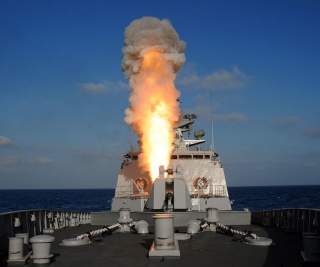The Indian Ocean: A Great-Power Danger Zone?
Five years ago, Robert D. Kaplan detailed the promise and the peril of this vital part of the globe. Will it be a source of tension or trust in the 21st century?
Conclusion
Robert Kaplan’s 2009 article contributed to our understanding of the Indian Ocean by providing a narrative for an increasingly important region that has often been seen as a place to pass through to places of greater geopolitical consequence. Yet, the “dynamic great-power rivalry” that Kaplan augured in 2009 has not yet materialized between India and China in the Indian Ocean, despite observers’ understandable anxieties.
Without a doubt, India will continue on its path of growth in terms of its naval capabilities and regional leadership. Meanwhile, China is here to stay in the Indian Ocean; economic interests have driven it westward, and the PLA Navy will be a regular presence. We will likely see more security cooperation between China and smaller Indian Ocean countries, whose navies and coast guards need greater capacity to carry out their maritime-security responsibilities. How uncomfortable will New Delhi be with increased Chinese security ties with Indian Ocean nations, including exercises? In the meantime, can India pursue regular naval exercises with China? The two sides already interact in counterpiracy operations in the Gulf of Aden and engaged in search and rescue maneuvers off Kochi, India in 2005. On the heels of their April 2014 interaction as part of a multilateral exercise off Qingdao, China and India should consider a bilateral Indian Ocean exercise in 2015 to mark the tenth anniversary of their first naval maneuvers in the Arabian Sea. Given overlapping interests regarding counterpiracy, counterterrorism and disaster relief, regularizing these kinds of interactions is one way to reduce the potential for the competition Kaplan discussed.
Security analysts are naturally drawn to great-power rivalry, but the Indian Ocean may become the place where great powers can alternatively practice working together to address transnational security challenges. Rather than “beginning an elegant decline,” the United States will likely maintain forward-deployed naval forces ready to respond to emergencies inside the Indian Ocean and beyond, while bolstering the role of other navies. Equally important, it will be willing to act as one of many participants—including resident as well as extraregional players, such as Japan, South Korea and European countries—in ensuring the security of these waters.
Seeing the Indian Ocean as a testing ground for collaboration, especially in the context of heightened tensions in the Pacific, opens the possibilities for a new era of maritime-security cooperation that transcends continental divisions and traditional power politics. Of course, the danger always exists that rivalries in the Pacific could spread to the Indian Ocean or that Chinese naval activity in the Indian Ocean could become confrontational. Although neither contingency appears likely in the foreseeable future, to manage such risks, it is worthwhile for stakeholders to build cooperative habits by drawing on shared interests in the Indian Ocean’s dynamic confluence of geopolitics and commerce.
Nilanthi Samaranayake is a strategic studies analyst at CNA Corporation, a non-profit research and analysis organization. The views expressed are solely those of the author and not of any organization with which she is affiliated.
Image: Wikimedia Commons/Indian Navy/CC by-2.5-in

